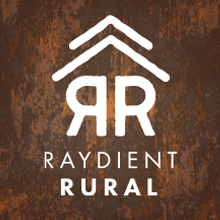Making A Farm Mud Room: A Renovation Story

Kentucky farmwife Catherine S. Pond shares how she designed, sourced materials and built a farm mudroom addition in their 1900s farmhouse.
First, some backstory. Ever since we moved to a small farmhouse in Kentucky, I have wanted a mudroom.
I have begged and pleaded for a mudroom.
A place to dump stuff to sort later in the house.
A place to put boots and shoes and to put them on, or take them off.
A place for coats and odds and ends.
Maybe even a small closet or, better yet, another pantry!
I have also wanted a small greenhouse, but I’ll get to that.
Surprisingly, the term “mudroom” is a more modern one that began to appear in 1950s suburban tract house plans
The farmhouses, which would have the most logical need for one, generally had a back porch entrance into the kitchen.
Early American houses often had attached entry sheds or annexes that connected to a larger barn. These liminal spaces were where wood and all manner of shed items were stored.

| The mudroom was added to the south side of the house where there was a once a direct back entrance into the laundry room. We retained that door, and the original outside window, on the interior wall to maximize light and air flow and to allow us to shut the door to the main house. We could have made it a bit wider, like 8’, but would have had to relocate the water spigot. As the mudroom is essentially a long hall, with several amenities, that didn’t seem necessary. |
Over three years ago, during a warm autumn, we decided to re-side the entire house, put a new roof on it, and add porches on both the eastern and western lengths of the structure.
I budgeted, I coordinated, I planned. It was my first solo project on the farm besides a chicken house design that I drew and oversaw.
I decided it was the perfect time for a mudroom, too, and I lobbied hard.
Our Kentucky house was built in the early 1900s as a simple cabin with an unheated upstairs, a kitchen at the back and two rooms in front, with small entry porches on either side.
About twenty years ago, the daughter of the former owner added two additions to either side of the downstairs: one containing two bedrooms with small closets, and the other for a large laundry room and full bathroom.
It wasn’t the most practical design, but it preserved the original layout without being too disruptive. It was a family farmstead that evolved over time, and we were glad to become its new owners and caretakers in 2009.
But on a farm, one needs a mudroom!
Our large laundry room, with its own entry door at the south of the house would have been a better kitchen space.
It has always been a catch-all for the washer and dryer, a large hutch that wouldn’t fit in any other space, a big work table (which, I confess, usually has laundry on it) and two large closets that I immediately put shelves in for food and canning supplies. Off the laundry room is a large bathroom.
The laundry room had an outside door, and so did our kitchen facing west.
Without fail, despite the laundry room door, everyone entered through the small kitchen and immediately deposited coats, shoes, backpacks and “everything” onto the kitchen table.
It drove me nuts, and I don't know why I didn’t press harder for a mudroom addition when our boys were still in school and home helping on the farm.
As we were redoing the porches, it occurred to me that I’d always wanted a mudroom, yes, but I also wanted a greenhouse.
The laundry room ran across the south side of the house, and I decided it was the perfect place for a mudroom—one with an array of windows facing south and a large shelf for plants.

| The mudroom faces south so we wanted to maximize light: both for the interior space as well as to overwinter certain plants. Ordering larger more substantial windows from a local box building store would have delayed the project, so we went with a row of smaller (and more affordable) shed windows which work just fine, especially as the mudroom can be closed off from the main house and doesn’t have its own heat/air source. |
The design is simple: 6.5 feet wide x 24 feet long. I cut just a bit off the end to have its own entry porch adjacent to the cement walk to the west porch.
We had just taken out an old cedar tree near the house so it provided the perfect space to do both.
With material shortages, windows were hard to find in the fall of 2021, but I was able to purchase eight affordable shed windows from a home store that would line up quite nicely on the outside wall, with one in the pantry (yes, pantry…our fourth designated pantry space!) facing east.
The old outside door to the laundry room became a lockable door to the main house, and a new door on the west end of the mudroom created a new entry.
We kept the pair of former outside windows from the laundry room for borrowed light and to circulate warm or cool air, so we didn’t have to extend the HVAC to the new mudroom.

| The insulated and sheetrocked mudroom awaiting finish carpentry and final details. The entire space—c. 8’ wide by 20’ long—includes a pantry area on the east end. It was a hard decision between a pantry and a practical walk-in storage closet, but food storage won out—also essential on a farm! |
Now I have a space for our old church bench, which we inherited when we purchased the farm; an old upper cabinet that I’d been using for plant pots and other gardening items and candles, on our M outdoor porch; a place for coats, pet food bins and plenty of shoes and boots.
My youngest son, who lives across the road on our farm with his family, did the finish carpentry on the interior and created two long bracketed shelves above and below the window.
He also built the pantry shelves and installed beadboard on the ceiling and side walls for that older look.

| The completed mudroom (and pantry at left) from the exterior. |
The painters put on oil-based paint on all surfaces, including the ceiling, except the walls above the beadboard. I wanted sturdy and durable paint, especially for the shelves.
We got some stone-like linoleum on sale locally, enough to redo our bathroom floor and the laundry room as well. It really looks like stone and is quite durable! I found some affordable rugs online (although my husband said, “Why do you need rugs in a mudroom?” which is a valid question).
But you know what? After all of this, we still mostly use the kitchen door but now I have proper space for coats and shoes, more pantry space (as we have a small kitchen with minimal cabinets) and a nice sunny space for plants and just getting a winter dose of vitamin D.
I have even thought about moving a small desk in there for the winter!

| The completed mudroom with a view from the pantry entrance to the outside door. My son, a builder and carpenter, installed affordable beadboard incised plywood for wainscotting and the ceiling. He also outfitted the pantry with extensive shelving and put in an upper and lower shelf along the mudroom windows for my plants, seed starts, and additional vintage kitchen collections. We found a textured stone-style linoleum flooring—on sale!—that we also put into the adjacent laundry room and bathroom. The runner was an affordable heavy duty option from an online home retailer. The church pew, which came with the house when we purchased it in 2009, is a perfect place to sit or set down incoming items for the house. The upright cupboard near the entrance, with its original paint, is a handy and decorative “catch all” for some plant supplies, seasonal candles and other items. The original exterior double window in the laundry room, at right, was kept to allow natural light into the main house as well as for better air circulation. |











Your email address will not be published. Required fields are marked*